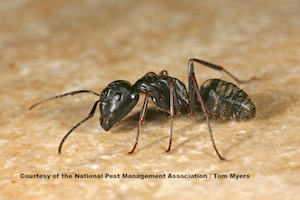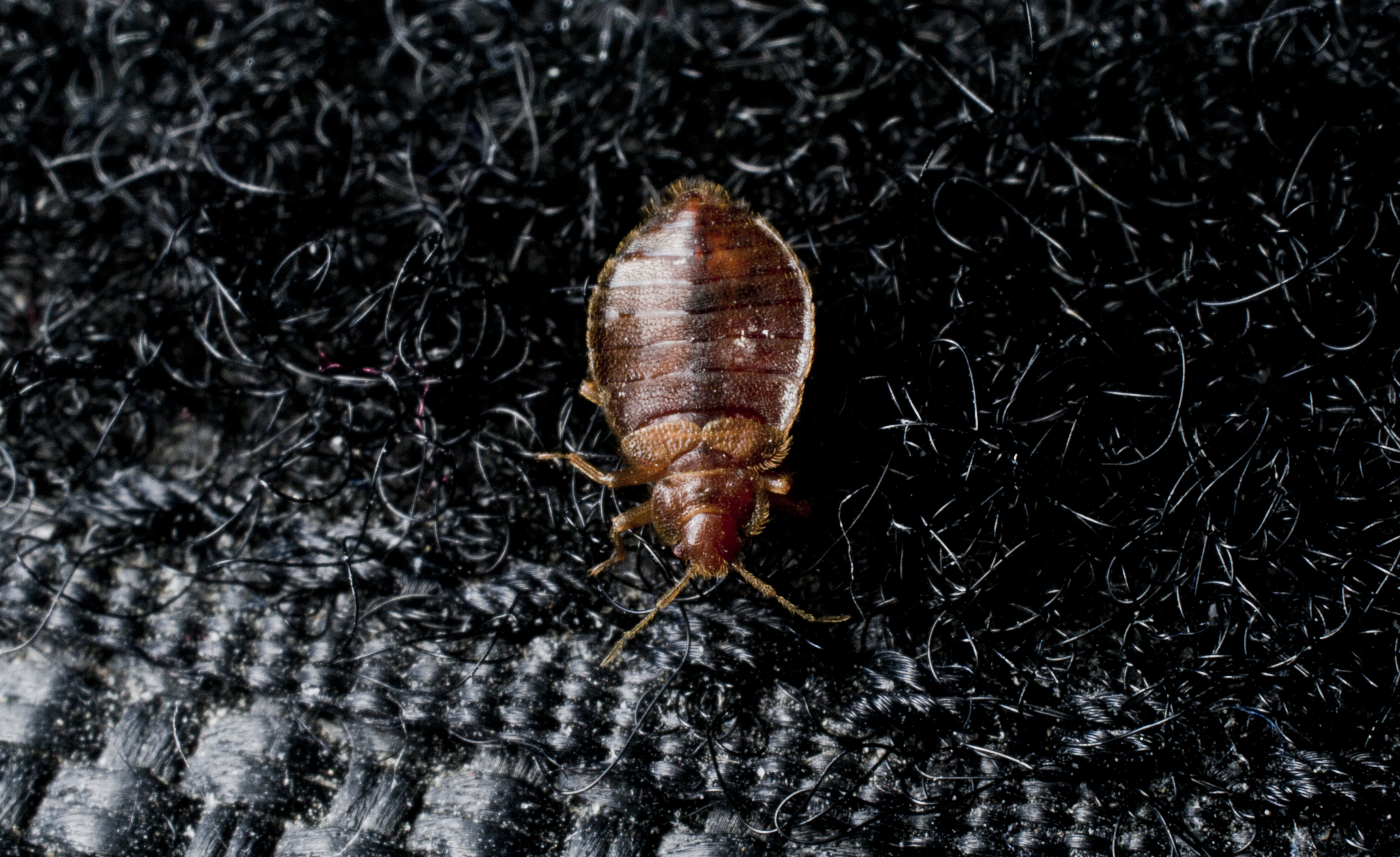Squirrels Driving West Coast Homeowners Nuts
An overview of types of squirrels found in the Northwest and along the West Coast
Most people, at some point or another, have witnessed a bushy-tailed, free-spirited squirrel dash up a tree, skillfully run along a power line or fearlessly spring across the road. But, what kind of squirrel was it?
There are more than 200 species of squirrels worldwide, many of which are found in the United States. Squirrels fall into one of three categories: tree squirrels, ground squirrels or flying squirrels. The majority of these rodents share the same basic characteristics – soft fur, bushy tails, short limbs and sharp claws – although their nesting habits may vary by species.
Along the west coast, there are five squirrel species that frequent backyards (and occasionally the confines of our homes). This includes the northern flying squirrel, California ground squirrel, western gray squirrel, American red squirrel and Douglas squirrel. Learn more about these species below.
Northern Flying Squirrel
The Northern flying squirrel is one of only two native flying squirrel species located in North America – the other being the southern flying squirrel. Northern flying squirrels have a patchy distribution, but they are primarily found in the northeast, along the west coast from Washington down to California, and in the northern states like Idaho, Montana and Wyoming. Northern flying squirrels are slightly larger in size compared to their counterparts. They are identified by their gray-brown fur on top and gray belly fur.
Despite its name, the northern flying squirrel actually glides instead of flies like that of a bird. These squirrels have special membranes between their front and hind legs that stretch out to form a kind of parachute for gliding from branch to branch.
In general, flying squirrels live in woodlands and forests of dense coniferous and deciduous trees. They nest in snags, nest boxes and woodpecker holes, especially in stumps or those near the top of dead trees. In winter, flying squirrels will also den in larger groups to keep warm – often in attics and wall voids where they can leave behind a noticeable odor and damage with their urine. These squirrels are also guilty of chewing through insulation and electrical wiring. The most effective way to prevent northern flying squirrels in the home is to seal up all points of entry with steel wool, and screen vents and openings to chimneys.
California Ground Squirrel
The California ground squirrel is considered one of the most generalized species of ground squirrels, as it inhabits a variety of areas. This type of squirrel is typically found in south central Oregon, western Washington and most parts of California.
California ground squirrels are diurnal, which means they are most active during the daytime, roaming around open and lightly wooded areas, including fields, pastures, small meadows and hillsides. They use sounds, tail signals and scent to communicate with their kin, and belt out a high-pitched call when threatened.
California ground squirrels spend most of their time on or in the ground, instead of in trees, hence their name. They dig extensive underground burrows used as shelter for their colonies. The burrows can span a distance of more than 30 feet, and contain multiple “doors,” so each squirrel can enter the tunnel separately.
Ground squirrels can inflict costly damage to decks – and even buildings – by burrowing under structures. They are also known to wreak havoc on flowerbeds, gardens and healthy lawns. California ground squirrel control is difficult, so a suspected infestation is best left in the hands of a licensed pest control professional.
Western Gray Squirrel
Western gray squirrels are one of the larger types of tree squirrels located out west. They are found in Washington, Oregon, California and a small portion of Nevada.
The western gray squirrel is the cousin of the eastern gray squirrel, which has a more widespread distribution. The easiest way to tell the difference between these two types of squirrels is by their size and coloring. The western gray squirrel boasts a salt-and-pepper to steel gray colored coat with a contrasting white underside, while the eastern gray squirrel changes color seasonally – it’s gray winter coat turns to yellowish-brown in the summer. Western gray squirrels also have longer bodies and tails with a white edge. When threatened, western gray squirrels make loud barking noises and flip their tails in distress.
Western gray squirrels are active year-round and exhibit diurnal activity. They inhabit coniferous forests and oak woodlands, building dreys – or nests of twigs lined with grass – in hollow trees. Gray squirrels frequently invade yards and may even enter homes through holes in the roof from missing shingles. Homeowners should inspect the roof on a regular basis and replace any damaged or missing shingles to prevent a gray squirrel infestation.
American Red Squirrel
The American red squirrel is another type of tree squirrel found in the Rocky Mountains, among other areas. These squirrels have small bodies with rust red to reddish-gray fur on top and a white or grayish-white underside. They also have white around their eyes and shorter, thinner tails compared to other tree squirrels.
American red squirrels are active year-round, especially in the early mornings and evenings. They usually nest in hollows in the ground or tree cavities found in pine forests. These squirrels are also common around buildings, and enter attics and garages for shelter.
Red squirrels have excellent senses of sight, smell and hearing. They are very territorial and make alarm calls by rattling, screeching, growling or chirping when a predator is nearby.
Douglas Squirrel
The Douglas squirrel is closely related to the American red squirrel. In fact, they are both referred to as pine squirrels. Where they differ is in their distribution and appearance. Douglas squirrels are found in parts of Washington, Oregon and California. They have cinnamon-colored fur on top and an orange-white underside, whereas American red squirrels have white bellies.
Douglas squirrels are active during the day, running from tree to tree in coniferous forests. During the summer, they build nests of twigs, bark and moss. In winter, they form their nests in tree holes. Similar to the American red squirrel, the Douglas squirrel is very territorial and vocal in nature.
Douglas squirrels may enter homes via tree branches overhanging the eaves. Homeowners should keep tree limbs and other shrubbery trimmed back 6 to 8 feet from the roofline.
Squirrel Control
In addition to causing structural damage to homes, squirrels have been implicated in the spread of disease via the parasites they harbor. These wild animals become aggressive when they feel threatened, so homeowners should not attempt to remove them on their own. In the event of an infestation, it’s important to contact an pest control professional with experience in small nuisance wildlife control to identify the species and recommend a proper course of action to secure the home and make yards less hospitable. To learn more about squirrels, including how to prevent a squirrel infestation in your home, check out our Squirrels 101 guide.

Learn About Ants
Ants are a common pest homeowners struggle to eradicate. Learn more about them!

Bed Bug Pest Guide
Traveling this summer? Be sure to keep an eye out for bed bugs! Use our Pest Guide to help identify this pest.

NPMA's What Grows There? Project
Check out NPMA's What Grows There? project to learn how pests, such as flies, cockroaches and rodents, can spread germs throughout a home.
Find a PEST PRO in your area

Learn About Ants
Ants are a common pest homeowners struggle to eradicate. Learn more about them!

Bed Bug Pest Guide
Traveling this summer? Be sure to keep an eye out for bed bugs! Use our Pest Guide to help identify this pest.

NPMA's What Grows There? Project
Check out NPMA's What Grows There? project to learn how pests, such as flies, cockroaches and rodents, can spread germs throughout a home.
